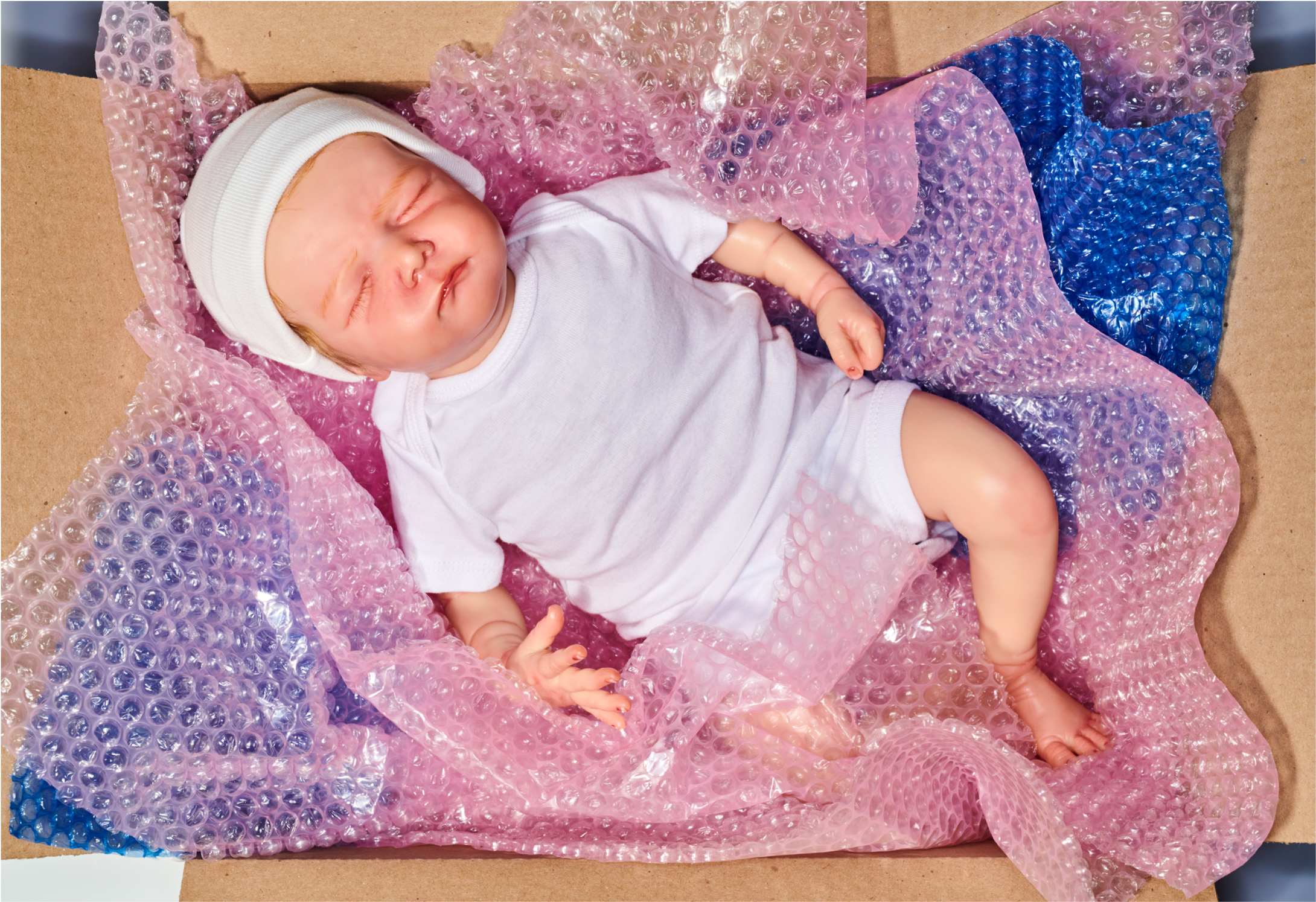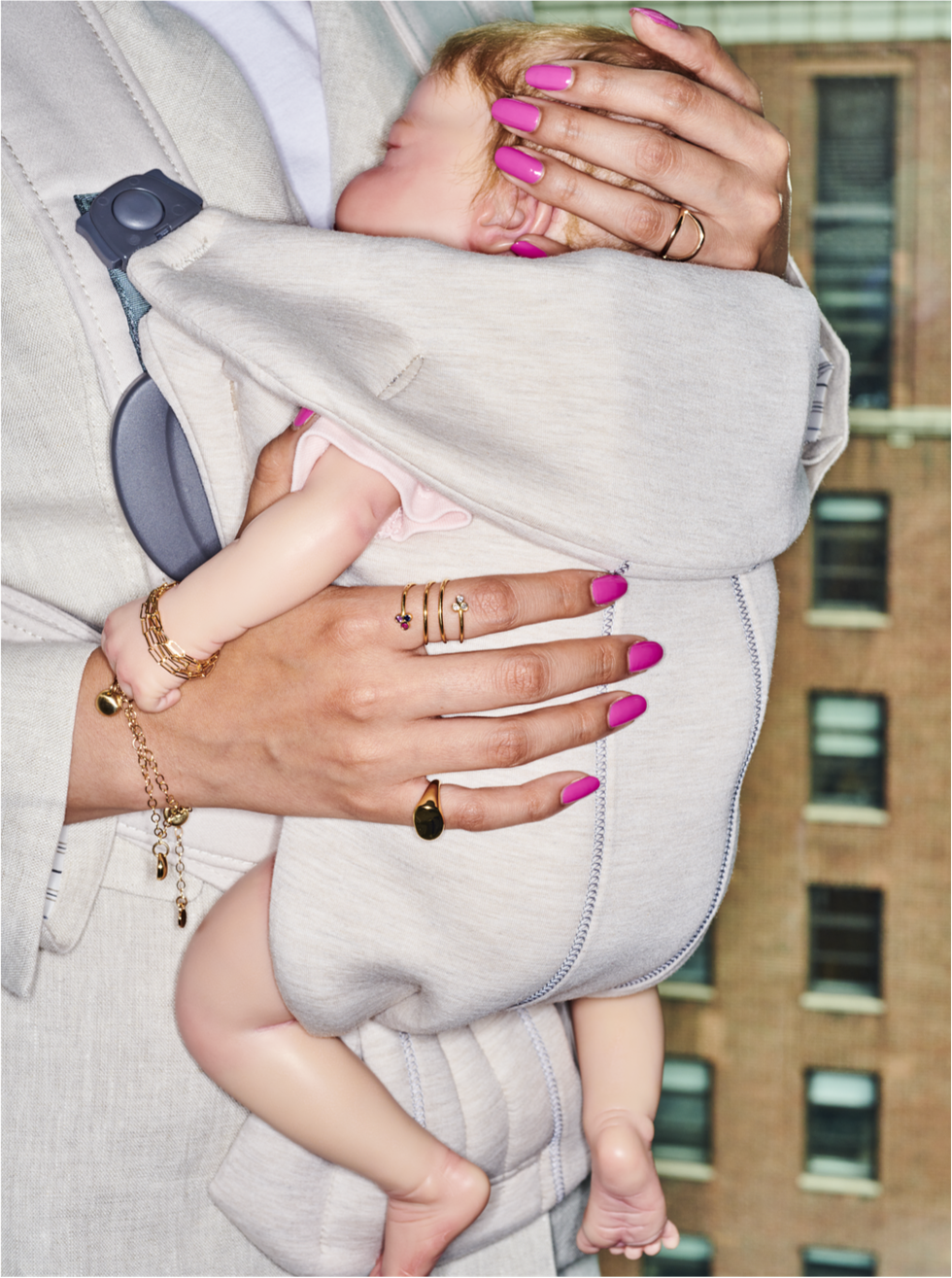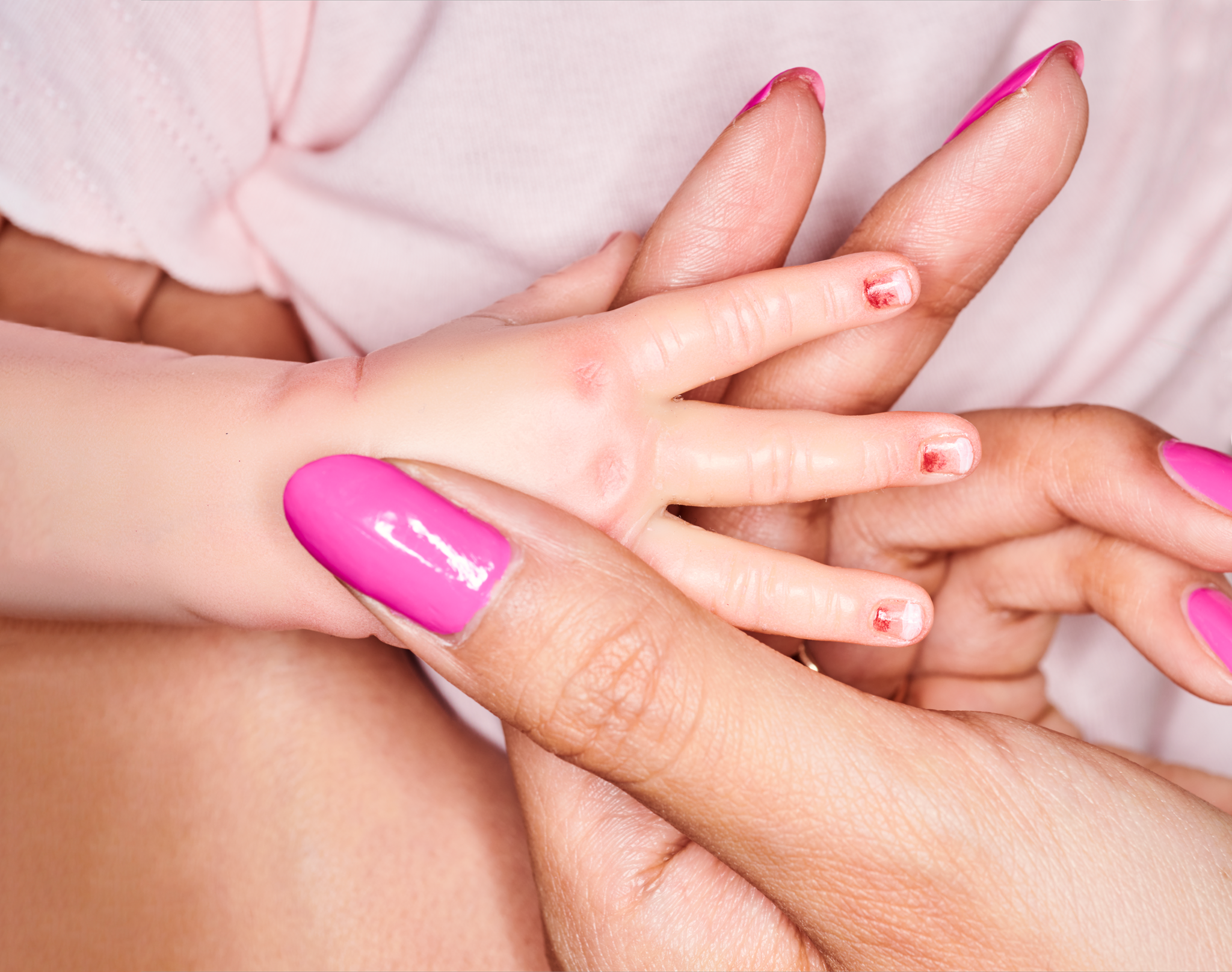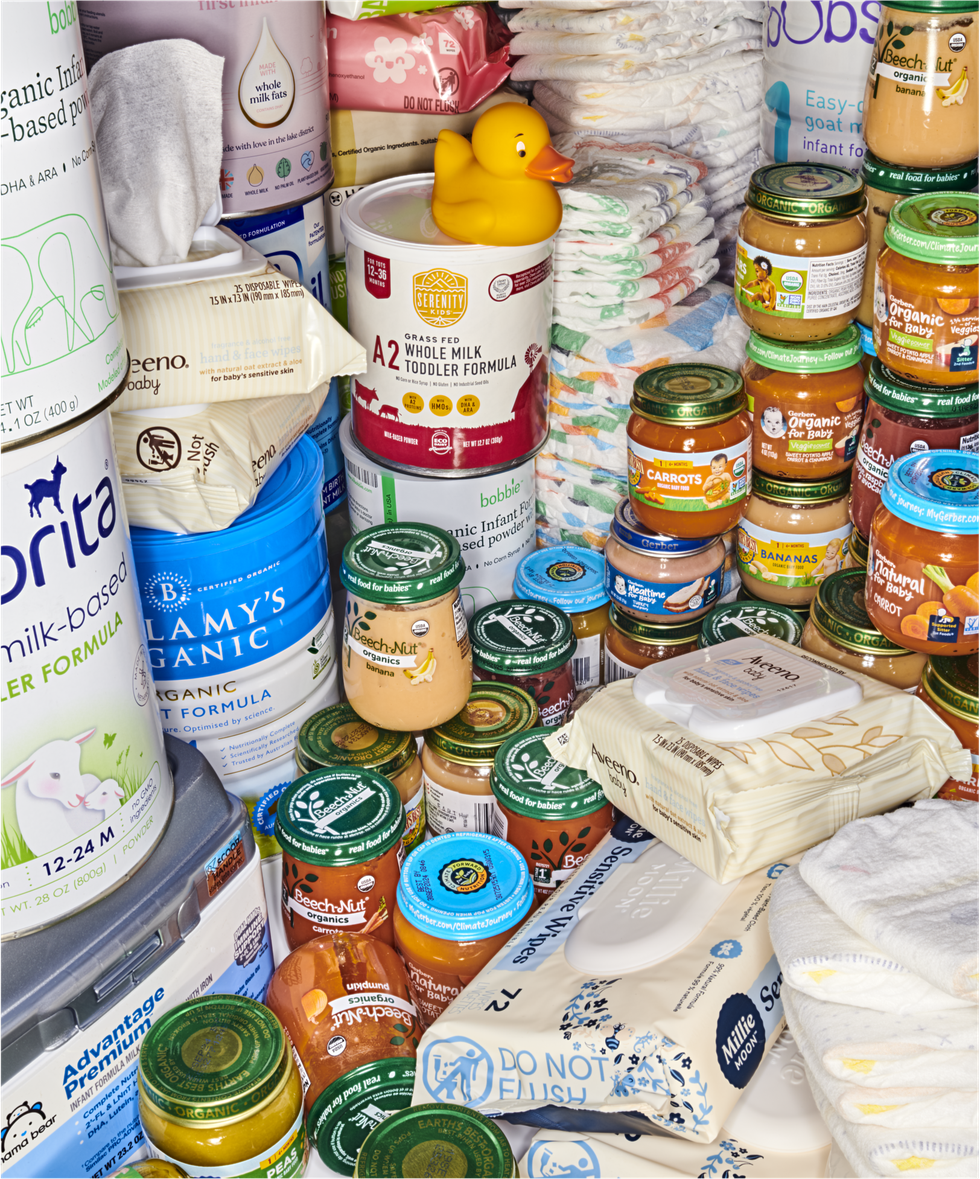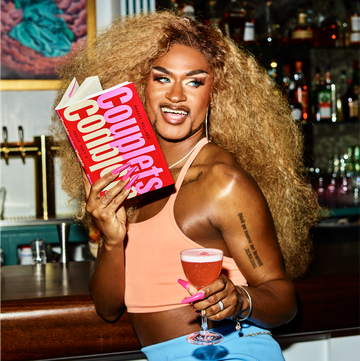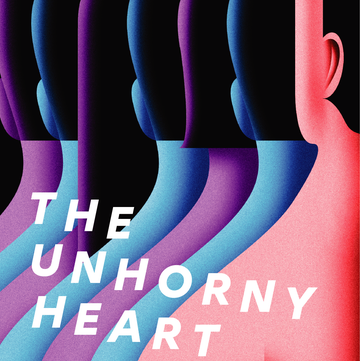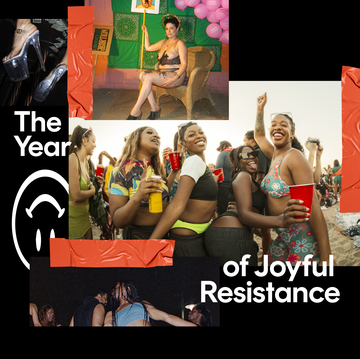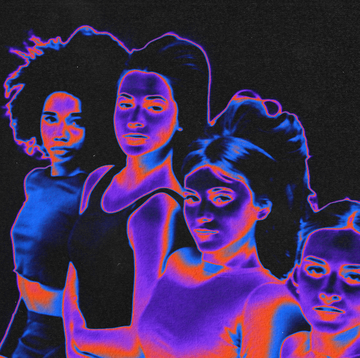Getting hit with severe COVID-19 should have been the most stressful thing to happen to Kiersten Haley last January. In a feverish fog, the 28-year-old military vet could think of little else besides fighting off the virus—even as she was at the center of a separate raging war. The latter was happening on TikTok, with hundreds of strangers swarming her account, denouncing her as selfish, telling her she deserved the hate flooding her comments (“You should be ashamed!!! ASHAMED!!!!”). As she physically recovered enough to read them, emotionally her brain was on fire. How were so many people this worked up about her “parenting” choices?
Kiersten is a mother not to human children but to dolls—specifically “reborn” dolls, a specialized class of hyperrealistic faux babies that inspire spooked curiosity in casual observers and fanatical devotion from a growing group of young superfans (see: #RebornBaby on TikTok, currently with 3 billion views). Price points for the dolls range from around $250 for a basic model to more than $5,000 for limited-edition versions with hair strands hand-rooted one by one and hand-painted layers of skin mottling, veining, and blushing. The community comprises tens of thousands of collectors and doll artists, many with very active social channels.
A trip down the reborn rabbit hole reveals practical tutorials on creating and caring for the dolls alongside elaborate role-plays that simulate life with a baby…or 10. Sometimes those babies are doing standard baby things (eating, pooping, napping). Sometimes they’re gravely ill. Apart from chasing views, enthusiasts’ motivations vary. Plenty jump into the scene just for fun. Another subset comes with deeper therapeutic aims, like coping with pregnancy loss. But lately, almost all camps have one quality in common: a propensity for drama.
At first, Kiersten was unclear what her offense had been. She’s been a doll mom since 2018, and she loves her 32 “babies”—Lavender, Leilani, Kinsley, Paisley, Bentley, Bob, and all the rest. Under the handle @Lambys_Nursery on TikTok and at her YouTube channel Lamby’s Nursery, she creates lighthearted content, filming role-plays at her home in Sacramento. There’s Kiersten bathing her brood, here she is dressing them, now they’re being bottle-fed. Sometimes they go on outings to Target or the park. Her more than 651,000 followers often tag along.
It was the bottle-feeding that did it, she would quickly learn. As the global shortage of infant formula approached its second year, people seemed to be on a witch hunt for doll moms draining the supply. Kiersten had purchased real-deal baby formula exactly once, three years earlier, out of a desire to make her doll videos feel extra immersive and authentic. She used up the formula gradually, over many months, then switched to filling her baby bottles exclusively with fabric softener. But that hardly mattered to online trolls. Kiersten still surfaced from her COVID ordeal to find “everybody yelling at me,” she says. “It was mom TikTokers, normal-people TikTokers—it was wild.” She explained the situation and apologized, adding that she donates baby items to those in need “to make up for the few items I do take off the shelves.” Months later, reborn influencer Mummy of 2 Reborns would go viral for buying cans of real formula and denying that the shortage existed at all.
Let’s go ahead and clear something up: Reborn moms understand their dolls aren’t actual babies. It’s just that, according to them, outsiders don’t get it. “The community has been stereotyped as mentally disturbed people who live their lives thinking that these dolls are real,” says Jill Elizabeth, a 30-year-old Florida reborn artist and collector who uses just her first and middle names professionally. Her YouTube channel, My Heart Is in Vermont, boasts more than 61,000 subscribers.
If anything, says Kiersten, reborns are a grounding and uplifting force. “These past few years have been so traumatic and hard, with how much the world has changed,” she says. “Just in my generation alone, we had 9/11. We saw a huge recession. Then COVID.” Playing with reborns in her home nursery turns back the clock on her generational despair, if only for a while. “The stress will melt away, and it’s almost like going back to a more innocent, better time,” she says. Uploading role-plays allows her to share that solace with others and build community. “Almost everybody I’ve met in the reborn hobby, we all were the outcast at some point in our real lives,” she adds.
Yet that hasn’t muted the outrage, not just over doll moms’ use of infant formula but also baby wipes, children’s medicine, clothing. One YouTube video showing a doll with a “diaper blowout,” its infant-sized Pampers smeared with artificial poop, invited a typical comment: “Ah, yes, supply shortages and I can’t find newborn-sized clothes or diapers, baby products are low stock and back-ordered, but by all means please continue purchasing them for a doll.”
It’s easy to agree with the comment. Hell, it’s easy to write off reborn obsessives altogether. But let’s face it: There’s some sexism in the instinct. “My husband can play with cars, he can play video games, he can play Lego and everybody’s like, ‘That’s so cool,’” says Kiersten. “But the moment I’m like, ‘I play with dolls!’ I’m a weirdo who needs to have a real baby.” If we’re going to ask whether reborn collectors should be using baby accoutrements as playthings, we should probably ask whether anyone should be using anything that isn’t 100 percent necessary or sustainable.
Amid fears of scarcity on an imperiled planet, whose hobbies really pass the purity test? For her part, Kiersten’s hunch is that at least a few of the angry mothers in her comments, their lives consumed by 24/7 childcare, wish they had waited a little longer to have kids. “I wonder if for some of them, it’s jealousy? Like, maybe they had a baby when they weren’t ready and they are missing their own freedom? ’Cause I can shove the dolls in a closet whenever I want and go to the movies.”
The reborn community has somehow tapped into another category of culture war: breastfeeding and bodily autonomy. Shallon Lebsack, 20, a reborn artist and midwife sonography student in Saint Joseph, Missouri, was scrolling Facebook one day and stopped in her tracks: “There was a huge announcement that said, ‘Please do not post videos or pictures of you breastfeeding your dolls,’” Shallon recalls. She was startled to learn that this was even a thing. “I’m just like, What the hell?…I’ve never heard of that in my life.”
For Shallon, reborn dolls aren’t just a source of fun and artistic expression—they’re a tool for processing early-childhood trauma. Until a family member adopted her at age 5, “I didn’t really have a certain person I would call Mom,” she says. She got into doll making through a love of horror films and their realistically gory props. Several years ago, a counselor suggested that a reborn doll might be helpful. “Like, since I wasn’t taken care of, I can take care of something to help heal that,” Shallon explains. She now sells reborn creations under the name Itsy Bitsy Lil Nursery in addition to caring for a doll named Ossie.
But even to some invested community members like Shallon, breastfeeding crosses a line. A vlogger brought viral attention to the practice in 2019 with a demo video that’s still drawing comments today. One of her goals, she says while pressing a pretend preemie named Gideon to her left nipple, is to dismantle “the stigma here in the U.S. of our bodies, being ashamed of our bodies, them being viewed as only sexual.…The breasts are there to feed a child, and it’s a beautiful and natural thing.”
Although many reborn moms appreciated the message (“Thank you for standing up for those of us with silent voices”), some—in a mini tempest of respectability politics—fretted that the breastfeeding would make them all look bad. “People have enough difficulties to understand and accept our hobby, we don’t need to give them more reasons to find it weird or deviant!” one wrote. Shallon falls more into the latter camp. “I try not to judge, but with that, I’m going to judge just a bit,” she says.
Kelli Maple, 21, a Massachusetts-based collector, reborn artist, and content creator with more than 2.1 million YouTube subscribers, also does not breastfeed and views the issue as a community concern. Given how frequently reborns are sold and traded, she would prefer to see informed consent protocols around the practice, whatever people’s reasons are for doing it. “If you had pretend-breastfed your doll and didn’t disclose that, I feel like that could be a bit gross to most collectors,” she says. “Just unhygienic.”
“Medical histories” of reborn dolls get wilder from there. An entire role-play subgenre is devoted to dolls afflicted with serious injuries and life-threatening illnesses, from broken arms to cancer, many with crying sound effects to communicate pain. To Kelli, this feels appropriative of human suffering. “It’s kind of romanticizing the life of a sick child,” she says. “I think it’s especially hurtful to the real people who deal with that.”
In one video, an influencer role-plays a scenario in which a reborn named Benny has just come home from the hospital with RSV, the virus responsible for 1 in 50 deaths of children under 5 years old. Benny lies face up in his crib, his chest and left leg stuck with hospital electrode stickers, a nasal cannula hooked to his nostrils. With gentle efficiency, the woman takes the doll’s temperature and bathes it with damp towelettes (“I’m gonna try to do this fast because he’ll get chilled,” she explains). Some viewers were horrified. “To replicate child illnesses is twisted,” wrote one. Another fumed, “A sick doll that was in the hospital???!!! Really???!!!!!” (The post’s creators did not respond to Cosmopolitan’s request for comment.)
Part of the visceral discomfort of watching these videos is the fact that they’re made for public consumption in the first place. It points to a bigger conversation happening right now around the ethics of “sharenting”—aka posting sensitive information about kids before they’re old enough to consent, says Jenna Abetz, PhD, an associate professor of communication at the College of Charleston who has studied combative mothering in mommy blogs. Sure, a doll isn’t going to grow up and sue you for violating their medical privacy, but there’s an increasing cultural unease with social posts that feel exploitative. A case, perhaps, for keeping your doll’s chemo sessions behind closed doors.
Still, audience metrics are no measure for the emotional reasons many doll collectors engage in this form of play. For them, maybe it just feels good to inhabit the persona of a calm, capable adult who could save the day in a medical crisis. And maybe that’s justification enough. “I think primarily, the feeling of being needed as a caregiver is fulfilling for that doll owner,” says Emilie St-Hilaire, a doctoral candidate at Concordia University in Montreal whose interdisciplinary research explores the reborn community. “It’s interesting to see this create drama. To have rules around, This type of play is acceptable and That type of play is going too far. I mean, the whole idea of having a supportive community was to support play.”
Oh, “fake” reborns are an issue too and have kindled a micro class war online. On one side, we have the expensive originals, whose price tags are justified by the effort they require: First, a sculptor makes the “kit” (unfinished parts cast in vinyl or squishable silicone), and then an artist adds painstaking aesthetic flourishes (the teeny freckles, the acrylic eyeball inserts) and assembles the parts, filling them with a weighting material to mimic a baby’s chubby density. “A lot of artists will talk about doing this out of enjoyment, out of love. And because they have that relationship to the process and to the doll itself, there’s a real ownership over that,” St-Hilaire says. Not that they don’t come up against the pervasive cultural insistence that women’s work grounded in passion doesn’t deserve real money. “I don’t see that labor very often being adequately compensated,” she adds.
On the other side, counterfeiters have begun to sweep in, copying artists’ work to mass-produce cheap knockoffs that they advertise aggressively on social media. Seasoned community members quickly spot counterfeit dolls when they pop up in forums and on social channels. The customers who buy fakes, knowingly or not, can face rampant bullying. “Anytime someone does get a scam doll, it seems like hundreds of people will swarm up on them, telling them how much they suck and their doll sucks,” says Kiersten, who estimates she’s spent $15,000 on her personal collection.
Some who’ve been targeted are fighting back. “I’ve seen videos on YouTube hating on people who support authentic reborns,” Kelli says. “They’ll call the authentic supporters elitist, saying that not everyone can afford an authentic reborn. And that’s how they justify buying the fake ones.” A few Facebook groups have organized against perceived gatekeeping with inclusive language like, “We love all reborn dolls” or “All babies are welcome.”
Just another example of what can happen when aspirational lifestyles clash with the undervaluation of women’s labor. “I think when you have more expensive or lifelike dolls, then you feel like you’re a part of a more special group, or it’s seen as more serious or you’re more dedicated to that art form,” Abetz says. “The more lifelike it is, the more you can kind of validate your own ‘mothering’ skills.”
In rare cases, warring factions do make up. Not long ago, Shallon found herself in a public spat with a less experienced artist, someone who Shallon felt was improperly packing her dolls for shipping and presentation. (“You’re supposed to protect everything and kind of make it look cutesy,” she explains.) Shallon posted a video implicitly criticizing the artist, who became deeply upset, Shallon remembers. “So then I was like, ‘Well, you need to learn to pack your dolls better.’”
A brief but ugly feud broke out before Shallon had an awakening: “We made, like, 18 videos back and forth battling over this, but she is literally the nicest human being I’ve ever talked to.” They declared a truce, and Shallon resolved to work on her communication skills, she says. “Then I bought a doll from her.”
Doll by Shallon Lebsack (Itsy Bitsy Lil Nursery). Prop stylist: Megumi Emoto for Anderson Hopkins. Model: Melissa Giselle/Parts Models.
JESSICA LUCAS is a freelance reporter covering the internet and online subcultures. Her work has been published in Rolling Stone, The Atlantic, Mic, BuzzFeed News, i-D, and elsewhere.
